17 Nights / 18 Days
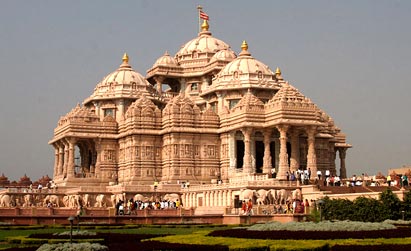
Arrive Mumbai Airport you will be met, assisted by our representative and transferred to your hotel.
Mumbai was given by Portuguese as dowry to Charles II of England when he married Catherine. The group of seven island was leased to the East India Company who offered freedom of business and religion to persons who came and settled here. Initially a few Parsis and Gujarati came but soon a sizeable population began to thrive here. This was way back in the 17th century. Today also Mumbai is a city of migrants. People from all over the country have come and settled here. This gives the society of Mumbai a multi-lingual and multi-cultural colour Overnight at Hotel
After breakfast proceed for city tour visiting Mani Bhavan: A memorial to Mahatma Gandhi, Flora Fountain: Now called Hutatma Chowk or Martyrs Square. This cherished but undistinguished fountain stands at the established business centre of Mumbai. . Siddhivinayak Temple : Dedicated to Lord Ganesha this beautiful temple is situated at Prabhadevi. Marine Drive : Built on land reclaimed form Back Bay in 1920, Marine Drive runs along the shore of the Arabian Sea from Nariman Point past Chowpatty Beach to the foot of Malabar Hill. Chowpatty Beach : Situated at the northern end of Marine Drive, it is a stretch of sandy beach and attracts hordes of people during the weekends and on holidays. Kamla Nehru Park : Situated across the road, this park is very popular with children. Laid out in 1952, it was dedicated to the memory of the wife of India's first Prime Minister. Rest of the day at leisure.
Overnight at Hotel
After breakfast drive to Surat enroute visiting Udvada - renowned for its Zoroastrian Atash Behram. This place of worship is the oldest still-functioning example of its kind, and has established Udvada as a pilgrimage center for Zoroastrians the world over.
Later continue to drive to Surat enroute visit Navsari. Arrive Surat and transfer to your hotel.
Overnight at Hotel
After breakfast drive to Vadodara; arrive Vadodara and transfer to your hotel.
Modern Baroda is a great and fitting memorial to its late ruler, Sayaji Rao Gaekwad III (1875-1939 AD). It was the dream of this able administrator to make Baroda an educational, industrial and commercial centre and he ensured that his dream would come true.
Overnight at hotel
After breakfast drive to Velavadar enroute visiting Lothal. Lothal: A perfect place to get an insight of the Indus Valley civilization. The most dominating site at Lothal is the massive dockyard spanning an area of 37 meters by 22 meters perhaps the greatest work of Maritime Architecture. Lothal was also famous for its arterial streets, microbes of gold, ivory and coppersmiths' workshops, potteries and underground sanitary drainage. It is located at a distance of 78 kms from Ahmedabad. (Closed on Fridays).
Later continue drive to Velavadar Black Buck Sanctuary.
Velavadar National Park: The best national park for black buck viewing in India is the 36sq km, which comprises a tapestry of grasslands and scrubby plains reminiscent of the African Savanah. The national park also provides suitable habitat for the endangered Indian wolf, the jackal, the Indian fox, the jungle cat, blue bull antelope and hare to proliferate successfully and attracts a large number of birds.
NOTE: Sanctuary remains closed from 15th June till 15th Oct. every year.
Overnight at hotel
After breakfast drive to Bhavnagar; arrive Bhavnagar and transfer to your hotel. First and foremost, you will visit Gandhi Smriti, an institution built in memory of Mahatma Gandhi. It contains a library, a museum & galleries of photograph depicting Gandhiji's life. This will be followed by a visit to Takhteshwar Temple, dedicated to Lord Shiva, in the evening.
Palitana which is situated 50kms from Bhavnagar. The hills of Palitana are known as the ‘Abode of the Gods’ and are covered with 863 Jain temples spanning a period of over 900 years. Their finely carved spires and towers glisten in the sunlight as pilgrims make the uphill journey on foot.
Overnight at hotel
After breakfast drive to Diu. Diu is a tiny island in the Arabian Sea which is situated near the port of Veraval in Gujarat and is separated from the southern extremity of the Saurashtra peninsula by a narrow channel running through the swamp. Diu is a sensuous blend of sun, sand and deep blue sea. Day free for leisure at Nagoa beach. The beach is exceptionally beautiful & quiet and is in the shape of a horse-shoe (semi circular).
St.Paul's church: The Church adorned with curiously treated volutes & shell-like motifs and the magnificent wood carving is considered to be the most elaborate of all the Portuguese churches in India. St.Thomas Church Museum: A huge edifice in gothic architecture was built in 1598 A.D. A part of it has been converted into a museum, an Archaeological treasure house.
Diu Fort: This majestic structure stands on the coast of Diu sentinel. Nagoa beach: The Nagoa beach is exceptionally beautiful & secluded. The horse-shoe (semicircular) shaped, palm-fringed beach is twenty minutes invigorating drive from Diu.
Overnight at hotel
After breakfast drive to Sasangir; arrive Sasangir and transfer to your hotel. Sasan Gir, Popularly known as Gir, the most famous loin sanctuary in India. And the one place in the subcontinent where Asiatic Loins can be found in the wild. Sasan Gir on the south-western border of Saurashtra peninsula in Gujarat and is home to nearly 400 Asiatic loins. The Sanctuary was created in 1913 to provide protections to the largest surviving groups of the Asiatic loins and was given the status of the sanctuary in 1965; the numbers of loins has been steadily on the rise since 1980.This is the only place in the World outside the African continent where the loin can be seen in its natural habitat. The loin safaris are popular among tourist & jeep are freely available for touring the forest. Though the most famous inhabitants of the park are Asiatic loins .It is also provides natural habitat to a lot of other species like chital, Chinkara (Gazelle) four horned antelope. Leopard, Nilgai, spotted deer, wild boar, wild ass, monkeys, parrots and peacocks, many others birds etc.
Overnight at hotel
After breakfast drive to Dwarka enroute visit Junagadh. Mount Girnar: Girnar Mountain is about 1100m (3630 ft.) high and is an extinct volcano. It is said that Mount Girnar was once a flying mountain. It is 4km east of Junagadh and is the main tourist attraction in the area.
On the plateau about 180m (600 ft.) from the top of the hill, is a group of beautifully carved Jain temples built between 1128 and 1500. Neminath, the 22nd tirthankara, is said to have died on Mount Girnar after living here for 700 years. There is a special marble temple dedicated to him here, and a black marble statue of him. The Mallinath Temple (1177) is impressive. On top of the hill is a small Vishnu temple dedicated to Dattatreya. There is also a temple dedicated to the goddess Amba Mata dating back to the 12th century. It is said that a visit to this temple guarantees a happy marriage. There are good views from the top of the mountain.
The steps go down and up again to Gorakhnath Peak at 1100m (3666 ft.), where there are footprints of the rishi Gorakhnath. There is another peak where there are footprints of Neminath. Further on is a goddess Kalika shrine. Visitors must climb 5,500 steps to reach the top of the hill, so it is best to start early in the morning (before 7 am). It is a difficult two-hour climb. Hundreds of people climb this hill every day. There are many stalls selling cold drinks along the way, but none selling bottled water, so bring your own.
Later continue to drive to Dwarka; arrive Dwarka and transfer to your hotel.
The small coastal town of Dwarka is one of the four most holy Hindu pilgrimage sites in India. It is here that Krishna founded his capital after leaving Mathura. Excavations have revealed 5 earlier cities at the site, all submerged. The present town dates largely to the 19th century and attracts thousands of pilgrims to celebrate the Holi, Diwali and Janmashthami festivals.The multi pillared Sabha Mandapa leads to a 60 pillared sanctum sanctorum that dates back 2500 years according to the scriptures.
Overnight at hotel
After breakfast visit Bet Dwarka & Nageshwar temple. Bet Dwarka: Bet is situated at 30kms from Dwarka and is surrounded by sea from all sides. One can reach Bet from Dwarka through Okha by road. On reaching Okha port jetty, one can reach Bet through a little sea journey in a launch or in a small boat.
Nageshwar Temple or Nagnath Temple is located on the route between Gomati Dwarka and the Bait Dwarka Island on the coast of Saurashtra in Gujarat. The Jyotirlinga enshrined in the Temple of Nagnath is known as Nageshwar Mahadev and attracts thousands of pilgrims all-round the year.
This powerful Jyotirlinga symbolizes protection from all poisons. It is said that those who pray to the Nageshwar Lingaa become free of poison. The Rudra Samhita shloka refers to Nageshwar with the phrase 'Daarukaavane Naagesham'
The Rukmini temple, dating from 12 to 13 Century, was built in honour of Rani Rukmani, princess of Vidharba, which was to be married to Sishupala, but fled with Lord Krishna. This small temple, 1.5 km north of the city, is an architectural masterpiece. The temple walls are decorated with beautiful paintings and sculptures.
Gopi Talav: This is the place where Lord Krishna used to play with his Gopikas. There is a small pond where it is said that Lord Krishna used to play with the Gopika Strees (Gopika Women).
Overnight at hotel
By Road - 235 Kms / 05 Hrs - Dwarka To Rajkot
After breakfast drive to Bhuj; Arrive Bhuj and transfer to your hotel.
The historic city of Bhuj derives its name from the Bhujiyo Dungar, a hill, overlooking the present day Bhuj town. Bhuj is a typical example of a desert town located between two geographical features - Bhujiyo Dungar on the east & Hamirsar Lake on the west. Bhuj, the major town of Kutch, is an old city established in 1510. With its surrounding wall, the atmospheric bazaar area, crenelated gateways, old palaces and striking temples the town still retains a medieval character. Every Feb/Mar it hosts the annual Rann Utsav festival.
Overnight at hotel
After breakfast visit the villages of Bhuj.
Amidst the Desert land of infinite dimensions, are suspended, quaint little villages. These are the last villages on the India-Pakistan border. Here you will come across master craft people' exposing their traditional art, turning our master pieces every day. Their ornaments, clothes, utensils, everything they use - will make you feel as if you have stepped into lifestyle museum leaving you spellbound.
Bhirandiyara: Bhirandiyara is a favourite Tea stop for locals and visitors alike on the road to Khavda. The village boasts of a delicious sweet - fresh Maavo. This milk-based sweet is best when eaten hot. Most of the roadside stalls sell Maavo. The local Meghwal Community has exquisite embroideries and skilfully decorated, colourful Mud Bhungas. Mud-Mirror work - Lippan kam is a decorative art done by common people mainly women. Lippan kam is done inside Bhungas / mud huts in villages of Kutch; sometimes you can find it on outer walls too. Generally women make birds, trees, animals, and peacock, human figures etc in Lippan kam. It is done with a mixture of clay and camel dung. Then gum is used to stick mirrors. Originality of lippan kam lies in adding no colour or only whites. Small round, diamond-shaped or triangle mirror pieces are essential to lippan kam.
Nirona: The village of Nirona is the only place in the world where the tradition of Rogan art is still practiced (a method of producing dyes from natural resources and castor oil and creating intricate and long-lasting designs on silk and cotton). Nirona also offers the chance to see artisans making copper bells and practicing wood lacquering.
Ludia: Ludia Village is comprised of several hamlets belonging to the Meghwal & Samma Communities. The latter community, primarily herdsmen, is more conservative when it comes to tourists. Gandhi nu Gam, populated by the Meghwal community, features beautifully Painted Bhungas .The Kanjari (Blouses) of the women and the Bhunga decoration of this village are especially colourful. To curb exploitation & experiment with community marketing, the hamlet has set up an "Otlo" or a roofed platform next to the Temple, where each household brings out their embroidered goods for selling.
Dhordo: Dhordo village has been situated as a last village in the area. Dhordo, has had approx.70houses, having 450 odd population of communities of Mutva (90%), Sheikh (8%), and Harijan (2%) involved in doing the jobs of various handicrafts popularly well known as ‘Banni Handicrafts ’which have become famous world across. Here the minutest of minute and expensive embroideries and mud work are done. Their craftsmanship and artistic works are so much excellent that craftsmen/artists have been honoured by national awards.
These people subsist and depend mainly on doing mud works, godadi works (very small quilts), patch - works, handmade embroideries as craftsmen and others on livestock as pastoralists (Maldharis). Inspite of being a last remote village in the Banni area, Dhordo has assumed the status of high - tech village, having the facilities of ATM being run on solar system, a higher secondary school with latest computers. Thus Dhordo stands out as a model village in Kutch, attracting the industry like Bromine industry and tourism. A solar plant covering the whole village for adequate power - supply for it has been installed. Not only this but as for the water - supply particularly the drinking water, it has been managed by the filtration of the collected water of the pond, which is maintained and becomes useful in the critical situation of shortage of water in summer.
Overnight at hotel
After breakfast drive to Dasada; arrive Dasada and transfer to your hotel.
The vast expansion of brazen land is also a heaven for the birds and bird-watchers. The unique ecosystem of the sanctuary provides an important feeding, breeding and roosting habitat for a large number of birds. Its strategic location on the bird migration route and its connection with the dynamic Gulf of Kutch makes it a perfect choice for birds. Many parts of the Little Rann of Kutch provide ideal breeding grounds for some of the largest flocks of Greater and Lesser flamingos. According to an estimate about 70,000-75,000 birds nests in an area spread over 250 acres. One of the most threatened birds, the great Indian bustard finds a refuge in certain pockets of protected areas. Birds like houbara bustard, francolin partridge, bustard quails, spotted & Indian sand grouse, desert wheatear, steppe eagle, short toed eagle, vulture, imperial eagle, laggard falcon, flamingos, ducks, cranes, pelicans and storks are found here.
The Little Rann of Kutch is a birding paradise and has been declared a Ramsar Site. During the safaris in the Rann expect to see large flocks of larks, and other dry land birds like sand grouse, coursers, plovers, chats, warblers, babblers, shrikes. Among the many winter visitors are the houbara bustard and spotted sand grouse.The best birding is at the lakes and marshes in and around the Rann where birds gather in numbers beyond comprehension during the winter months from October to March. These are the months when demoiselle and common cranes are seen in incredibly large numbers. The wetlands also attract flamingos, pelicans, storks, ibises, spoonbill, a variety of ducks and other waterfowl. The Rann is also the hunting ground of raptors like the short-toed eagle, Aquila eagles, and six species of falcon, buzzards and three species of harrier.
It is one of the few places where harriers can be seen roosting on open-ground at night.
Overnight at hotel
After breakfast drive to Ahmedabad; arrive Ahmedabad and transfer to your hotel. Ahmedabad is Located on the banks of the river Sabarmati, the city was founded by Sultan Ahmad Shah in 1411. Today it is one of the fastest growing cities of India and is an immense repository of tradition, history & culture. Its famous walled area is one of the finest examples of community living & the city thrived as the textile capital & was nicknamed “Manchester of the East' in 1888. This multicultural city is home to some of the finest Indo-Sarcenic mosques & Jain temples.
The old city of Ahmedabad is dotted with labyrinthine by lanes called 'polls'. The exquisite carved wooden mansions and havelis are in no manner less than their stone counterparts in Rajasthan. The city also offers a rich architectural legacy that blends Hindu and Muslim schools of architecture, stone and brick with arches, domes and vaults, carved pillars, trefoil designs besides the modern buildings designed by the famous French architect, Le Corbusier and Louis Kahn.
Overnight at hotel
After breakfast proceed for day excursion to Nalsarovar. Nal Sarovar Bird Sanctuary, consisting primarily of a huge lake and ambient marshes.
Clouds upon clouds of more than 200 types of birds land in this lake having made an equally long journey to escape the harsh winter of their nesting areas. Here they find food and warmth. These migrant birds visit Nalsarovar every year from November to February. During these four months water is plentiful and fish, insects and aquatic plants abound in the lake - an ideal environment for the birds. Nalsarovar at this time is a birdwatcher's delight.
When food and water are scarce in Nalsarovar, some birds go away for short periods to nearby areas and return to the lake after monsoon to a feast of fish and insects. These are the resident birds. The lake - Nalsarovar - and the wetlands around it were declared a bird sanctuary in 1969. Spread over 120 sq.kms, the lake and the extensive reed beds and marshes are an ideal habitat for aquatic plants and animals. The lake attracts a large variety of birds like plovers, sandpipers and stints.
Overnight at hotel
After breakfast proceed for city tour of Ahmedabad.
Gandhi Ashram: On a quiet peaceful stretch of the Sabarmati River, Mahatma Gandhi set up a simple retreat in 1915. This was his Satyagrah Ashram and for many years it was the nerve centre of India’s freedom movement. It was from here, in 1930, that Mahatma began his famous Dandi March to the sea to protest against the Salt Tax imposed by the British. Hridaya Kunj, the simple cottage where he lived, is now a national monument and preserved as it was during the Mahatma’s life-time.
Sidi Sayed Mosque : One part of the wall in the old citadel of the mosque built by Ahmed Shah’s slave, Sidi Sayed, is celebrated the world over for its exquisite stone window tracery – a superb & peerless example of delicate carving that transforms stone into filigree.Jumma Masjid: The Friday mosque was built by the city’s founder, Sultan Ahmed Shah, in 1423. Built of yellow sandstone in an architectural style that combines the best of Muslim & Hindu traditions. It stands on 260 pillars that support 15 domes at varying elevations.
Teen Darwaja: The triple-arched gateway was built by Sultan Ahmed Shah to serve as the royal entrance to the Maidan Shahi or the Royal Square. It is in an imposing monument of perfect proportions & highly ornate buttresses.Hutheesingh Jain Temple: Built outside the Delhi Gate in 1850 by a rich Jain merchant, the Hutheesingh Temple is the best known of Ahmedabad’s many ornate Jain temples.
Adalaj Step-well: It is situated 17kms north of Ahmedabad. The step well at the village of Adalaj is another fine example of this magnificent architectural form. Adalaj Vav is richly carved, every pillar and wall surface covered with leaves and flowers, birds and fishes and friezes of ornamental designs.
Akshardham: Lord Swaminarayan, born in Chapaya in Uttar Pradesh, took a seven year pilgrimage in Gujarat to preach his religion. He built six temples, the first being at Kalupur in Ahmedabad. Akshardham, the Swaminarayan temple of Gandhinagar, is a modern complex, built in traditional Indian architectural style from 6,000 metric tons of pink Rajasthan sandstone, carved by expert artisans from Bansipahadpur. The temple is set in a multi-acre garden called Sahajanand Van, with intricate sculptures of Hindu Gods. There is a gold leaf copper sculpture of Lord Swaminarayan that faces similar sculptures of Gunatinand Swami. The interiors have beautiful columns in rosewood that rise up to a high dome. Akshardham remains closed on Mondays.
Overnight at hotel
Today in time transfer to Ahmedabad Airport / Railway Station to board flight / train for your next destination
Saffron Nirmal Tours & Travels is One of the Blooming and Excellent Travel & Tourism Companies Based in Delhi, India. We Offer the Best International and Domestic Tour Packages to Our Clients. We also Provide Outstanding Travel Related Services such as Airline Ticketing Services, Rail Ticketing Services, Hotel Booking Services, Car & Coach Rentals and Mice Services for Clients Ease and Comfort. We also Offer Different Tour Packages for Our Clients such as Honeymoons Holidays, Family Holidays, Group Holidays, Adventure Tour, and Romantic Holidays Etc. Clients According to Their Budget and Interest Can Choose Their Package. We Offer Highly Flexible Services to Our Clients. Our Service Charges are Very Affordable. Read More...
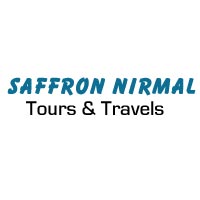
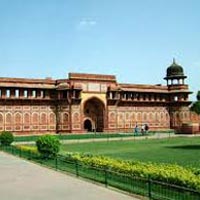 11D/10N
11D/10N
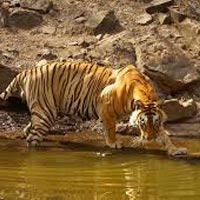 24D/23N
24D/23N
Jaipur - Bikaner - Gajner - Jaisalmer - Mount Abu - Dungarpur - Ranthambore - Agra ..
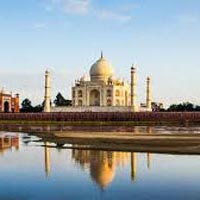 5D/4N
5D/4N
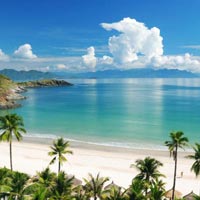 8D/7N
8D/7N
Maharashtra Splendor (Mumbai to Mumbai) ..
Mumbai - Nashik - Kolhapur - Aurangabad - Ellora Caves - Tadoba - Ajanta - Goa
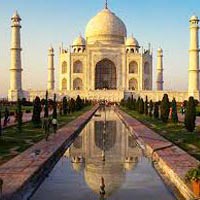 8D/7N
8D/7N
New Delhi - Jaipur - Sawai Madhopur - Chittorgarh - Jaisalmer - Jodhpur - Bharatpur..
 8D/7N
8D/7N
Agra - Khajuraho - Varanasi - Jaipur - Sawai Madhopur - Chittorgarh - Jodhpur - Uda..
 5D/4N
5D/4N
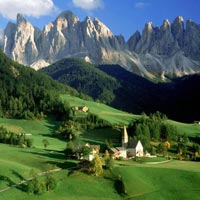 7D/6N
7D/6N
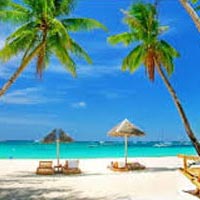 5D/4N
5D/4N
 18D/17N
18D/17N
Best of North & West India with Nepal Tour
Mumbai - Kathmandu - New Delhi - Jaipur - Fatehpur Sikri - Agra - Jhansi - Varanasi..
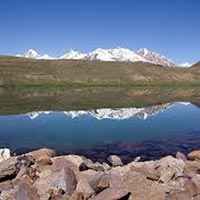 18D/17N
18D/17N
Kalpa - Nako - Sarahan - Lake - Tabo - K..
Kalpa - Tabo - Kaza - Dharamshala - New Delhi - Chandigarh - Mcleodganj
 18D/17N
18D/17N
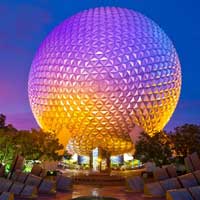 18D/17N
18D/17N
Ultimate USA with Bahamas Cruise Tour
San Francisco - Los Angeles - Las Vegas - Pennsylvania - New York - Orlando - Monte..
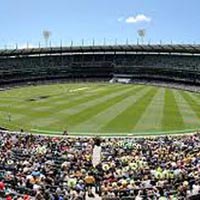 18D/17N
18D/17N
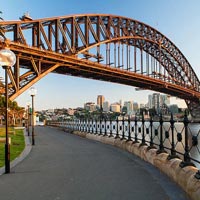 18D/17N
18D/17N
Amazing Australia with Newzealand Tour
Brisbane - Sydney - Rotorua - Christchurch
 18D/17N
18D/17N
 18D/17N
18D/17N
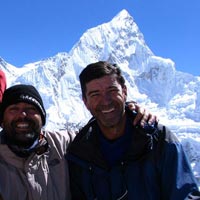 18D/17N
18D/17N
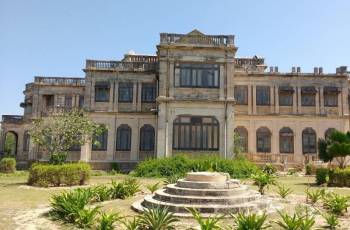 10D/9N
10D/9N
Gujarat Tour Package 9 Night - 10 Days
Ahmedabad - Junagadh - Porbandar - Rajkot - Dwarka - Somnath
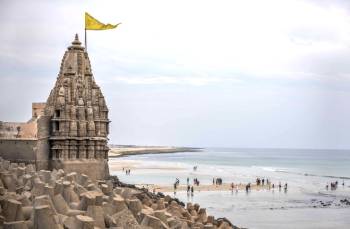 10D/9N
10D/9N
Gujarat Tour Package 9 Night - 10 Days
Junagadh - Rajkot - Vadodara (Baroda) - Dwarka - Somnath - Diu
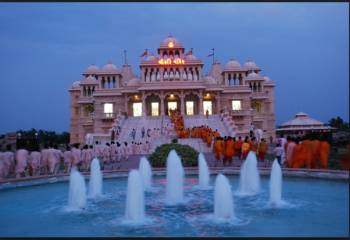 10D/9N
10D/9N
10 Days Gujarat Tour From Ahmedabad
Ahmedabad - Junagadh - Porbandar - Rajkot - Dwarka - Somnath
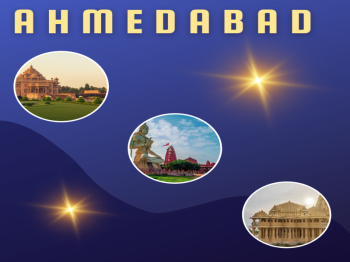 7D/6N
7D/6N
06 Nights / 07 Days - Ahmedabad Tour Pac..
Ahmedabad - Vadodara (Baroda) - Somnath - Dwarka - Narmada
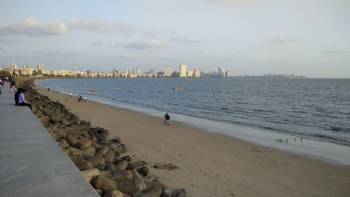 9D/8N
9D/8N
8 Night - 9 Days Gujarat Tour Package
Ahmedabad - Junagadh - Porbandar - Vadodara (Baroda) - Dwarka - Somnath - Narmada
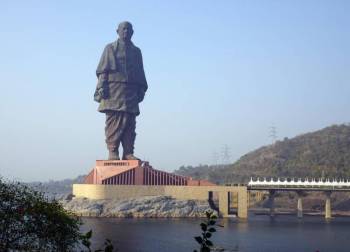 9D/8N
9D/8N
8 Night 9 Days Gujarat Tour Package - 2
Bhuj - Vadodara (Baroda) - Dwarka - Somnath - Diu - Narmada
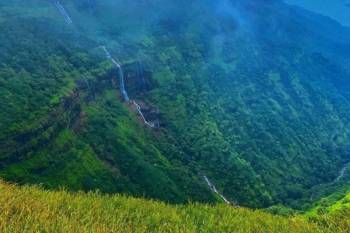 8D/7N
8D/7N
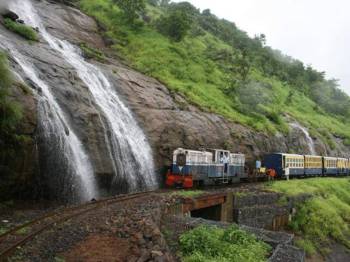 8D/7N
8D/7N
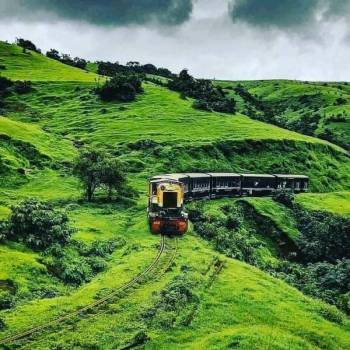 8D/7N
8D/7N